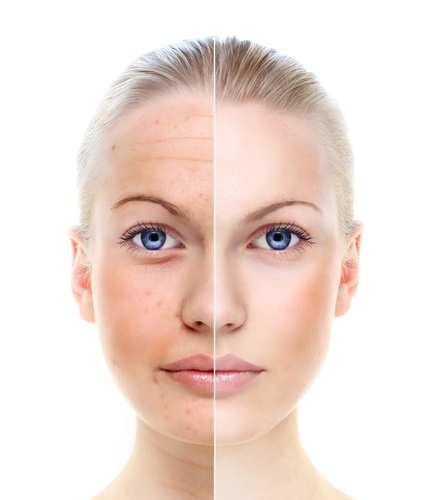 It is the perfect time to address the signs of damage accrued throughout the summer as we say goodbye to fall. The environment and sun’s rays have damaging effects that can cause the skin to become patchy, dehydrated, marred with brown spots and cause fine lines and wrinkles. Post summer peels are a great option to repair this damage and to help protect the skin from further damage in the upcoming months.
It is the perfect time to address the signs of damage accrued throughout the summer as we say goodbye to fall. The environment and sun’s rays have damaging effects that can cause the skin to become patchy, dehydrated, marred with brown spots and cause fine lines and wrinkles. Post summer peels are a great option to repair this damage and to help protect the skin from further damage in the upcoming months.
Chemicals peels provide a perfect solution because they are designed to peel the top layers of the epidermis and some deeper peels target the dermis. The process dissolves the bonds that hold the cells together, which expedite the exfoliation process. Post summer peels significantly improves texture irregularities, pigment concerns and clogged pores in the skin.
After the summer when the risk of sun damage decreases is the ideal time to receive chemical peels. The skin has returned back to its natural tone and chemical peels can safely penetrate the skin. Patients also find it easier to stay compliment with post-treatment care.
When a patient’s risk of sun damage decreases after the summer and tissue is closer to its natural tone, the depth of a peel via increased percentages of active ingredients, or by “stacking” one to two additional passes of these ingredients during the application process. It is pivotal that the new, healthy skin that is unveiled is properly protected with a broad-spectrum sunscreen year round.
It is crucial to maintain skincare treatments throughout the fall and winter. Many experience dryness due to the decrease in the natural exfoliation process and the skin’s exposure to moisture-binding molecules within the dermis that regulate the skin’s moisture level. The result is often a dull, dry appearance in both tone and texture. Chemical peels present an effective, simple solution for exfoliation and stimulation of the dead skin cells.
To determine the best peel there are multiple factors that should be considered including the patient’s skin type, tissue sensitivities, peel ingredients, potential peel penetration, and external influences over the healing process. Peel ingredients may include trichloroacetic acid, resorcinol, Jessner’s solution, or a blend of alpha and beta hydroxy acids, including glycolic, lactic, mandelic and salicylic acid. These ingredients are formulated to enhance the skin’s clarity, color, texture and tone.

